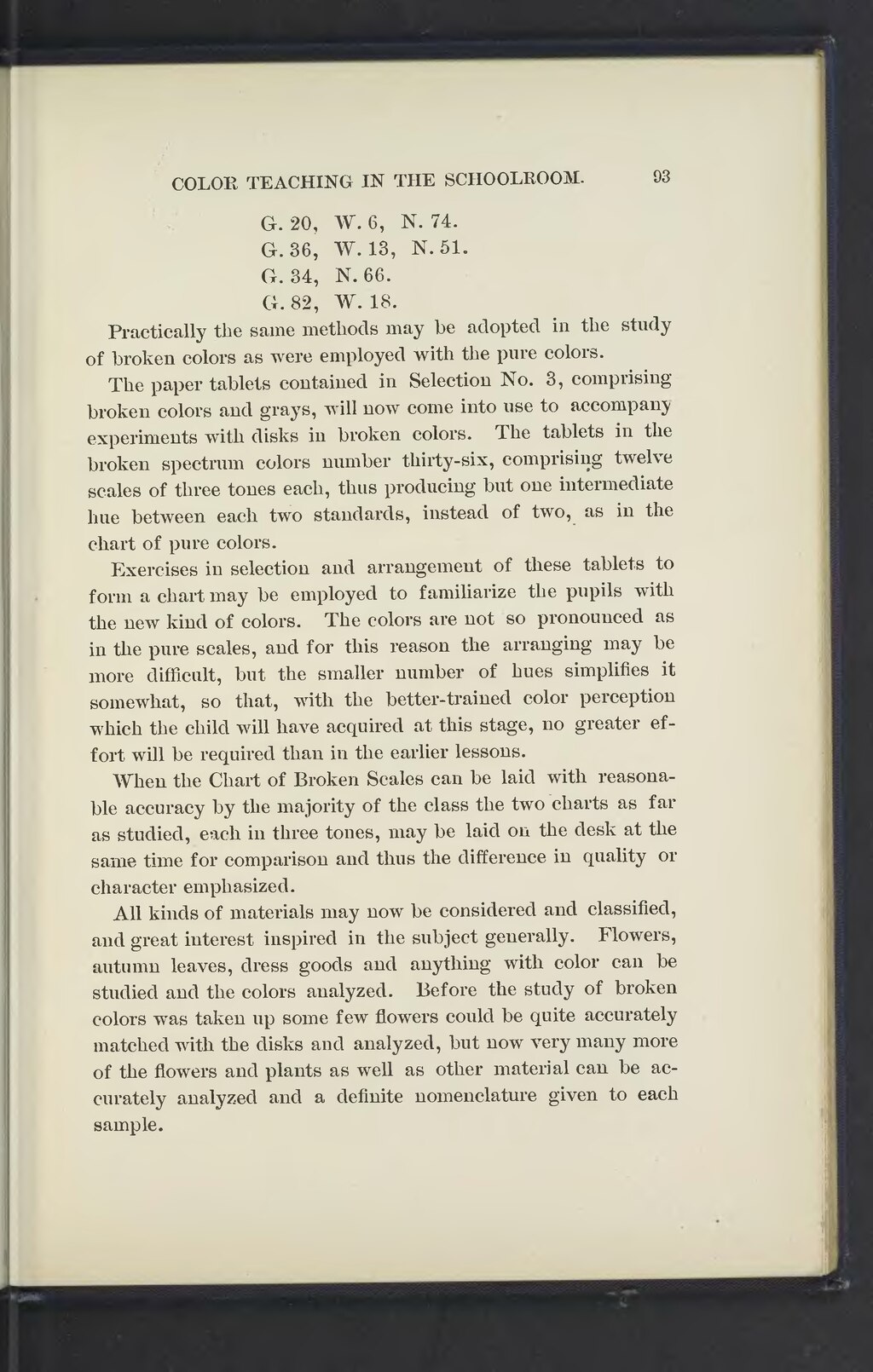| G. 20, W. 6, N. 74. |
| G. 36, W. 13, N.51. |
| G. 34, N. 66. |
| G. 82, W. 18. |
Practically the same methods may be adopted in the study of broken colors as were employed with the pure colors.
The paper tablets contained in Selection No. 3, comprising broken colors and grays, will now come into use to accompany experiments with disks in broken colors. The tablets in the broken spectrum colors number thirty-six, comprising twelve scales of three tones each, thus producing but one intermediate hue between each two standards, instead of two, as in the chart of pure colors.
Exercises in selection and arrangement of these tablets to form a chart may be employed to familiarize the pupils with the new kind of colors. The colors are not so pronounced as in the pure scales, and for this reason the arranging may be more difficult, but the smaller number of hues simplifies it somewhat, so that, with the better-trained color perception which the child will have acquired at this stage, no greater effort will be required than in the earlier lessons.
When the Chart of Broken Scales can be laid with reasonable accuracy by the majority of the class the two charts as far as studied, each in three tones, may be laid on the desk at the same time for comparison and thus the difference in quality or character emphasized.
All kinds of materials may now be considered and classified, and great interest inspired in the subject generally. Flowers, autumn leaves, dress goods and anything with color can be studied and the colors analyzed. Before the study of broken colors was taken up some few flowers could be quite accurately matched with the disks and analyzed, but now very many more of the flowers and plants as well as other material can be accurately analyzed and a definite nomenclature given to each sample.
